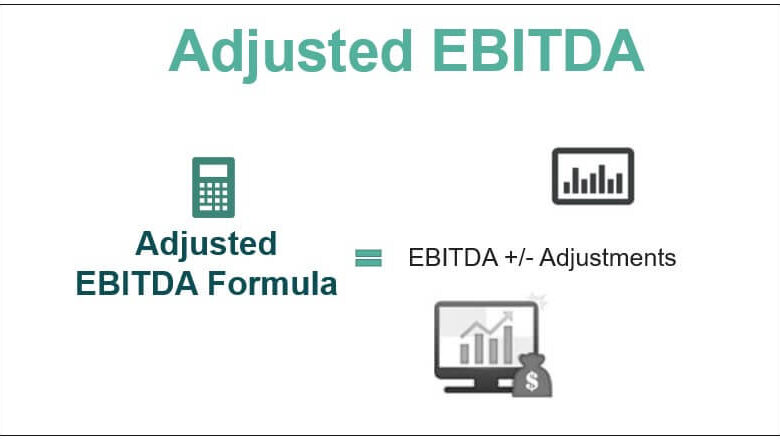Unveiling the Power of Adjusted EBITDA: Maximizing Financial Insights

Introduction of Adjusted EBITDA
Unlock the potential of adjusted EBITDA in understanding financial health. Discover its significance, calculation, and impact on business growth. Dive into this comprehensive guide now!
In the dynamic landscape of finance, understanding key metrics is paramount for informed decision-making. One such metric, Adjusted EBITDA, holds significant importance in assessing a company’s financial performance. This comprehensive guide delves into the depths of Adjusted EBITDA, unraveling its intricacies, calculation methods, and practical implications for businesses. Let’s embark on a journey to unlock the power of Adjusted EBITDA.
The Significance of Adjusted EBITDA
Adjusted EBITDA, or Earnings Before Interest, Taxes, Depreciation, and Amortization, is a critical financial metric used to evaluate a company’s operational performance. Unlike traditional EBITDA, which excludes only interest, taxes, depreciation, and amortization, Adjusted EBITDA further adjusts for exceptional or non-recurring expenses, providing a clearer picture of ongoing profitability.
Understanding the Calculation Process
To calculate Adjusted EBITDA, start with the net income and add back interest, taxes, depreciation, and amortization. Then, incorporate adjustments for exceptional expenses such as restructuring costs, one-time legal settlements, or non-cash expenses like stock-based compensation. The resulting figure offers insights into the core earnings generated by the company’s operations.
Importance in Financial Analysis
Adjusted EBITDA serves as a key performance indicator for investors, analysts, and lenders, offering a standardized metric to compare companies across industries. By eliminating non-operational expenses, it provides a more accurate reflection of operational efficiency and cash flow generation.
Utilizing Adjusted EBITDA for Business Growth
Strategic Decision Making
Adjusted EBITDA empowers businesses to make informed strategic decisions by focusing on core operational performance. Whether evaluating expansion opportunities, assessing investment returns, or negotiating mergers and acquisitions, this metric provides a holistic view of profitability.
Enhanced Financial Transparency
Incorporating Adjusted EBITDA into financial reporting enhances transparency and accountability. By clearly delineating operational performance from non-recurring items, companies foster investor confidence and credibility in their financial statements.
Challenges and Limitations
While Adjusted EBITDA offers valuable insights, it’s essential to acknowledge its limitations. Over-reliance on this metric without considering other financial indicators can lead to skewed assessments of a company’s financial health. Additionally, varying methodologies for calculating Adjusted-EBITDA across industries and companies may hinder comparability.
Navigating Complexities
Navigating the complexities of Adjusted-EBITDA requires a nuanced understanding of financial reporting standards and industry-specific factors. Collaborating with financial experts and leveraging robust analytics tools can mitigate potential pitfalls and ensure accurate interpretations.
FAQs (Frequently Asked Questions)
What is the difference between EBITDA and Adjusted-EBITDA? EBITDA excludes only interest, taxes, depreciation, and amortization, while Adjusted-EBITDA further adjusts for exceptional or non-recurring expenses, providing a clearer picture of ongoing profitability.
How is Adjusted-EBITDA calculated? Adjusted-EBITDA is calculated by starting with net income and adding back interest, taxes, depreciation, and amortization. Then, adjustments are made for exceptional expenses to reflect core operational earnings.
Why is Adjusted-EBITDA important for investors? Adjusted-EBITDA serves as a standardized metric to compare companies’ operational performance across industries, offering insights into profitability and cash flow generation.
Can Adjusted-EBITDA be negative? Yes, Adjusted-EBITDA can be negative, indicating that a company’s operational expenses exceed its operational earnings. However, it’s essential to analyze the underlying reasons for negative Adjusted-EBITDA, such as temporary market fluctuations or structural issues.
How does Adjuste- EBITDA impact valuation? Adjusted-EBITDA influences company valuation by providing a clearer picture of core operational earnings, which forms the basis for valuation multiples such as EV/EBITDA.
Is Adjusted-EBITDA universally accepted? While Adjusted-EBITDA is widely used in financial analysis, its acceptance varies across stakeholders. Investors and analysts may scrutinize adjustments differently based on their risk tolerance and evaluation criteria.
Conclusion
In conclusion, Adjusted-EBITDA stands as a powerful tool in financial analysis, offering insights into a company’s operational performance and profitability. By understanding its significance, calculation methods, and practical applications, businesses can leverage Adjusted-EBITDA to drive strategic decision-making, enhance financial transparency, and foster sustainable growth.



